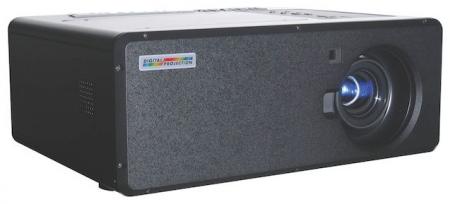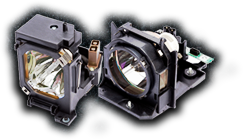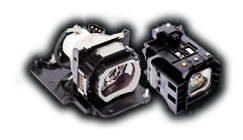As the original Digital Projection International E-Vision projector, the WGXA 600 was the manufacturer’s successful attempt to market more cost-effective, yet powerful commercial projectors. A lot has changed since this projector was unveiled at InfoComm 2010. Yet, the current DPI E-Vision line-up shares a lot of the same technology with this original incarnation.
The E-Vision line-up and the WXGA 600 all share a dual-lamp, single-chip DLP design. The E-Vision projectors all have impressive lumen outputs suitable for large venues. They all have an impressive range of compatible lenses. And they’re all fairly cost-effective compared to similar commercial projectors.

Yet, when compared to the current line-up, the E-Vision WXGA 600 shows signs of aging. It has limited 3D capabilities, for instance, and the lumen output was upgraded in 2012, when the 600 was replaced by the E-Vision 7000. Even so, the 600 paved the way for DPI’s E-Vision line-up, and it remains a powerful projector still in use in many large venues, including houses of worship and corporate conference spaces. So what was so great about the WXGA 600?
Brightness, Color Options, Long Lamp Life and Lens Options
- 6,000 ASNI Lumens: The brightness – for the price – was one thing that set this projector apart from the competition in 2010. At 6,000 lumens, the output was, and still is, perfect for large venues with ambient light. Today, the competition is catching up, but the DPI WXGA 600 was one of the first to make that level of brightness affordable.
- Long Lamp Life: Even at 6,000 lumens, the E-Vision WXGA 600 achieved a fairly long lamp life. In standard mode, the projector was rated at 2,000 hours. In single-lamp eco mode, lamp life was extended out to 6,000 hours. That’s pretty impressive. Unfortunately, due to the dual-lamp construction, the E-Vision WXGA 600’s replacement lamp isn’t as cost-effective compared to single-lamp projectors. Yet, considering the initial investment, it’s a small price to pay to extend the life of the machine. The DPI replacement for this projector – Part No. 110-284 – starts at $484.99.
- Color Wheel Options: There were two color wheel offerings for this projector: a 4-segment and 6-segment wheel. The former was the pre-installed version, and users could quickly interchange the wheels, based on their preferences. As you would suspect, the 4-segment wheel option provided a more pared-down color palate, while the 6-segment wheel added richness and depth (with a slight drop in brightness.) Not to mention, calibration for both was extremely user-friendly. Today, most E-Vision projectors are available with two different 6-segement wheels.
- Lots of Lens Options: Thanks to a range of zoom lens as well as a fixed lens, the WXGA 600 had a massive throw ratio range of .77:1 to 8.3:1. This allowed venues to customize their installation to fit their particular space, which is important considering the 45-pound projector isn’t all that portable. Today’s line-up has an even more expanded lens collection, with similar zoom and fixed offerings.
Comparing the WXGA 600 to DPI’s Current E-Vision Line-Up
In 2012, the WXGA 600 was replaced by the E-Vision 7000, which added a few new specs. Lumen output was boosted up to 6500, and the 7000 added 3-D capabilities. Although the E-Vision 7000 was recently replaced by 7500, which added an optional WUXGA capability, HDMI connectivity and useful picture-in-picture options, the WXGA 600 shares a lot of similarities with the 7500 – including the two color-wheel functionality, similar lamp life, and lens options. In other words, even today, the WXGA 600 is very competitive with some current E-Vision projectors and it would be a cost-effective used or refurbished purchase for larger venues.


